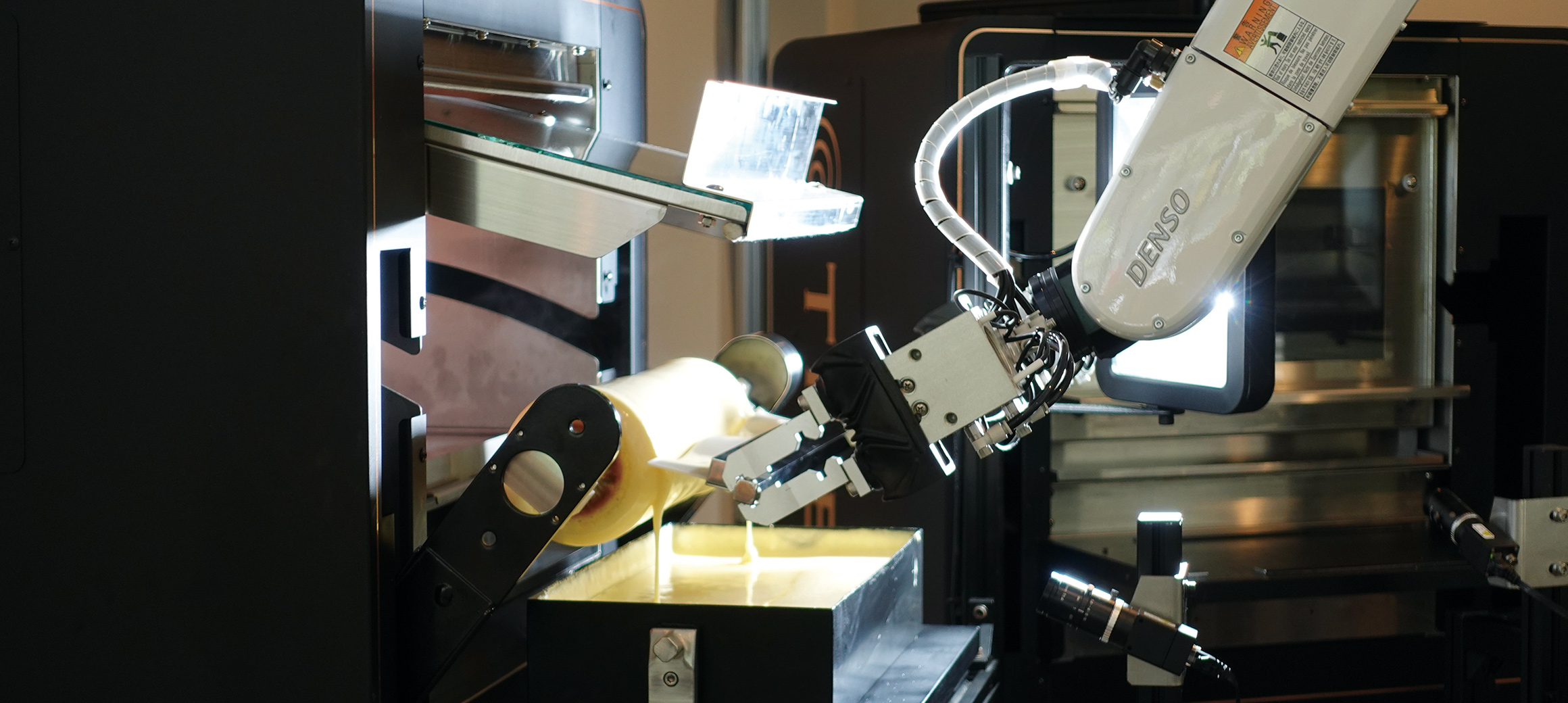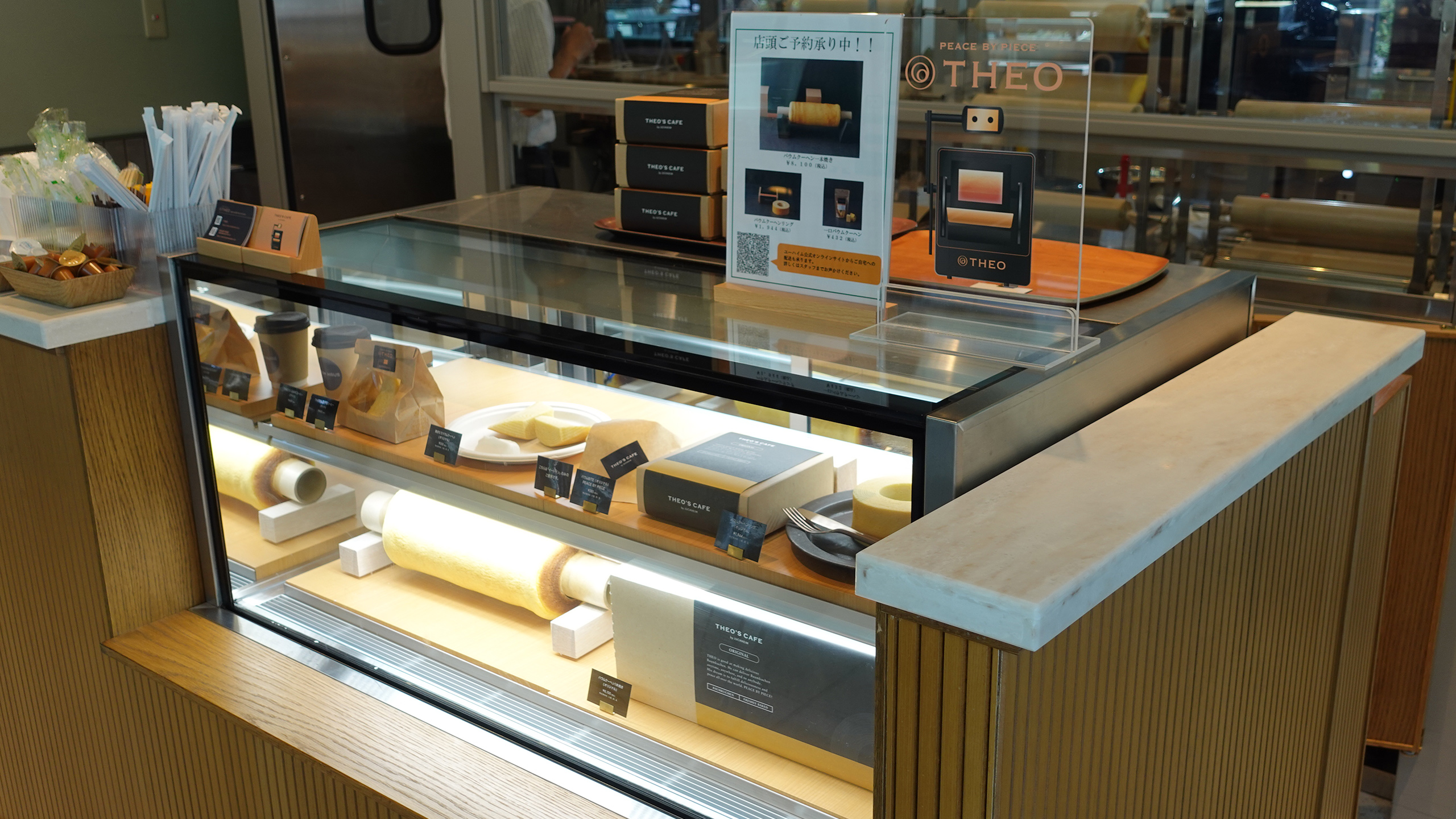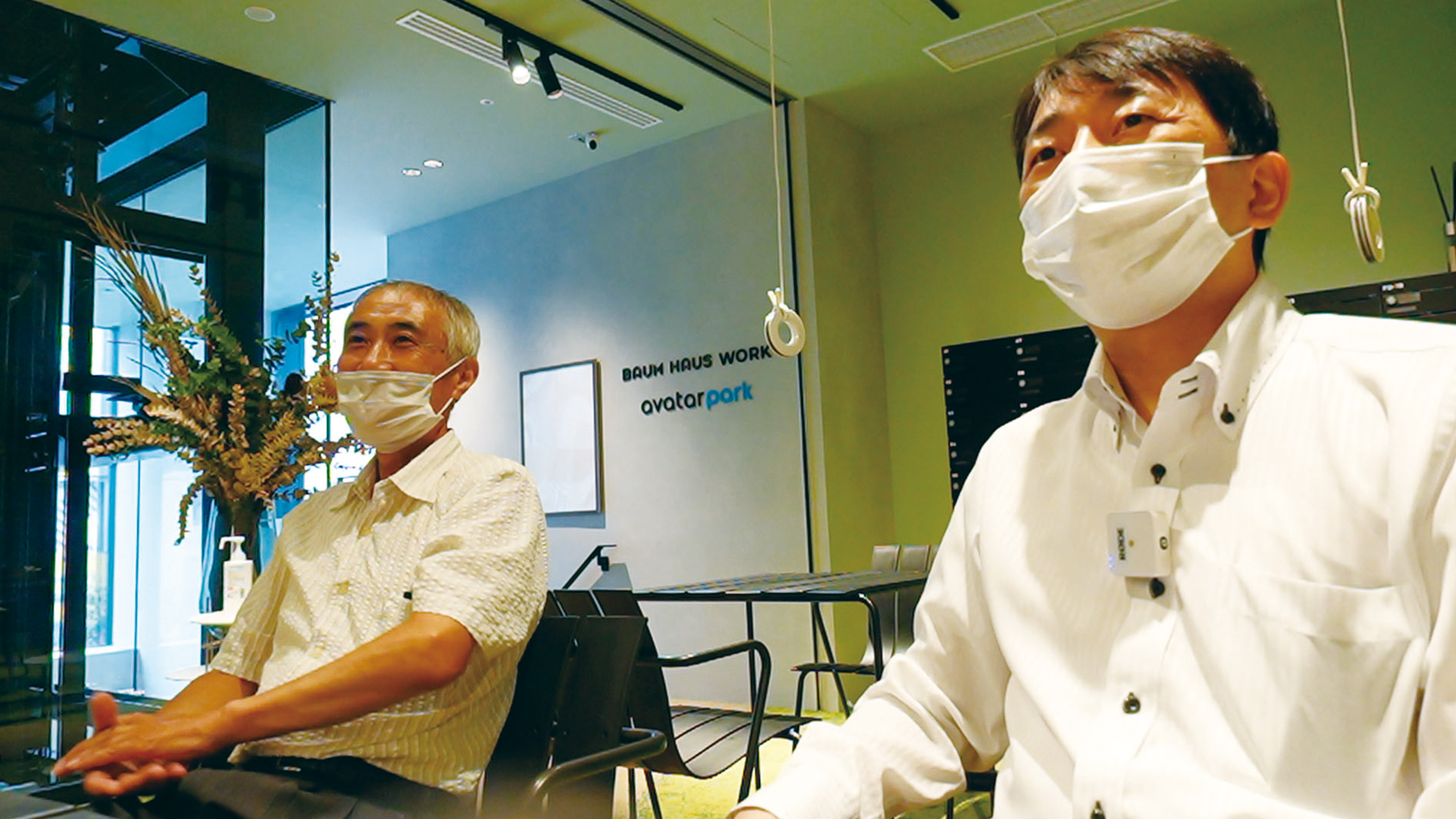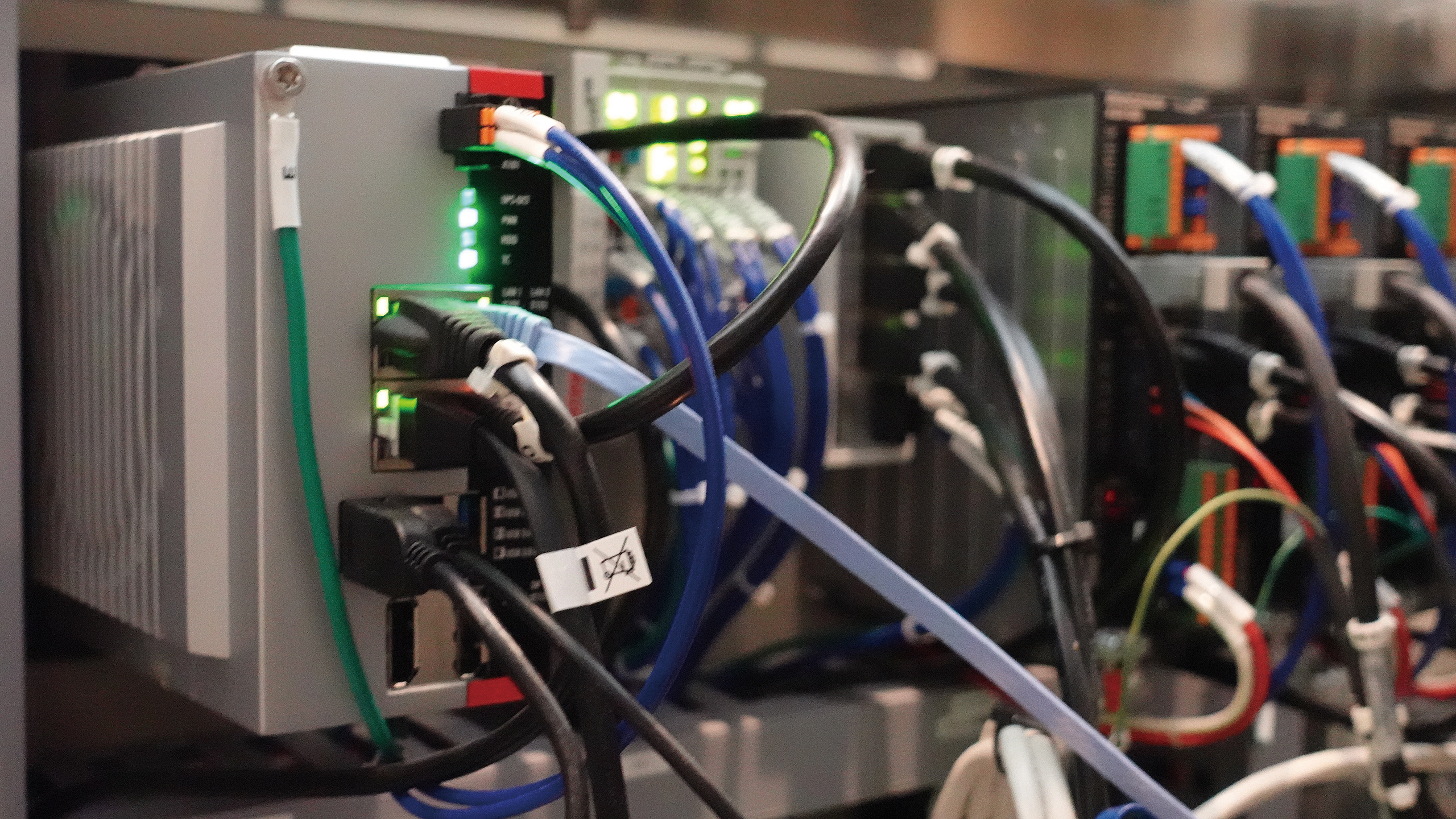

Ultra-compact Industrial PC and TwinCAT power robot-based cake production
When thinking about robots used in Japan, many people imagine large-scale robots in manufacturing plants, collaborative robots (cobots), and hospitality and care applications. A novel solution for food manufacturing has been unveiled by Juchheim Co., Ltd., a confectionery manufacturer that has been in business for over 100 years.
The "Theo" robot bakes high-quality Baumkuchen. Theo is controlled by an ultra-compact Beckhoff Industrial PC with TwinCAT software and supported by an artificial intelligence (AI) application. The engineering firm Matsuura Denkosha Co., Ltd. provided support during the development of the control system, including the integration of a Denso Wave robot. Founded in 1909 and operating in Japan since 1922, the Juchheim Group, with administrative headquarters in Kobe, runs more than 350 stores in the high-end Baumkuchen segment and is a supplier in Japan and Singapore. Baumkuchen is a German style of layered cake that is also popular in Japan. Ever since the company was founded, the Juchheim confectioners have been baking the delicacy according to the same recipe – without any food additives.

"Baking Baumkuchen requires advanced skills and experience on the part of the confectioner," emphasizes Mr. Matsumoto, Managing Director of Juchheim's central plant. However, if the oven's parameters can be captured and set remotely, and if the baking temperatures can be displayed precisely, Juchheim's pastry chefs can remotely control local machines to produce top-quality Baumkuchen. "With Theo, Juchheim is taking one step further," said Mr. Yokoyama, a Juchheim consultant. "Through integrated AI and the expertise of master confectioners, Baumkuchen can be made anywhere in the world with the same Juchheim quality." "The idea for Theo originally came from Hideo Kawamoto, the President of Juchheim," adds Mr. Matsumoto.
In parallel with the development of Theo, the company planned the construction of a new building complex with the theme of food innovation – the "Baum Haus" in Sakae, Nagoya. Part of the concept was also a transparent baking studio, which was further developed with Theo into a fully automated Baumkuchen studio.
The perfect 13 layers of dough with PC-based control
The process of making a Baumkuchen is simple in itself: a rotating core rod is repeatedly coated with raw dough and placed in the oven – until 13 layers of dough are evenly baked.
Before baking, the dough container and core rod must be transported to the oven and pushed in. This is normally done by operating personnel but can be automated easily using a conveyor belt and robot arm. However, the baking itself requires an expert. Theo replicates the expert's skills with the help of AI. For this unprecedented task, Juchheim selected the engineering firm Matsuura Denkosha as its development partner. The company not only has expertise in AI, but also extensive experience in the control of articulated robots. "The Baumkuchen plant consists of three Theos, a vertical articulated robot and a conveyor belt that transports the dough containers and rods," explains Mr. Kitano, Managing Director of Matsuura Denkosha. All components are controlled by an ultra-compact Beckhoff C6030 Industrial PC with Intel®-Core™ i7 processor and networked via EtherCAT.

The high-tech bakery installed in the Baum Haus is almost completely automated. All the operator has to do is prepare the Baumkuchen dough and the core rods, and place them on the conveyor belt, select one of the three ovens on the control panel and start the baking process. Then the conveyor belt automatically transports the dough container and core rod to the specified position. The robot picks up the container and rod and places them in front of the oven. Then the robot begins to coat the core rod with dough and apply the layers one by one. The AI functionality implemented in the oven monitors the process and ensures highly precise baking.
Mr. Kitano explains, "The advantage of the Beckhoff IPC and TwinCAT software is real-time process control via EtherCAT and the Windows integration.” In this system, TwinCAT 3 PLC controls the conveyor belt, the rotation of the oven, and the opening and closing of the door using EtherCAT drives and motors that are precisely synchronized with the robot’s motion. In addition, the IPC offers high scalability so that Juchheim’s own Windows applications can be used as can solutions for remote system maintenance. The I/O components from Beckhoff also play an important role. After all, there are many sensors and cameras to integrate. The compact housing and the wide range of EtherCAT I/Os enabled the system integrator to save control cabinet space and minimize engineering complexity.
AI inference and TwinCAT PLC on a single platform
The AI functionality runs as a Windows application on the same IPC as TwinCAT. "We use multimodal AI technology to monitor the quality of the Baumkuchen," Mr. Kitano points out. For this purpose, high-performance cameras are installed in front of each oven to capture images of the cake surfaces. This data is linked to other sensor data, including those from radiation pyrometers. The AI model is based on a Convolutional Neural Network (CNN), and was previously trained in Python in a separate environment. It is implemented in the standard IPC as a Windows application.
As the number of dough layers increases, so does the diameter of the Baumkuchen. Accordingly, various parameters can vary, such as the distance from the oven wall and the baking time required to achieve a perfectly baked dough layer. It is an extremely delicate process that requires careful monitoring of baking conditions up to removal from the oven at the optimal time, and for the application of the next layer of dough. In addition, the surface of the dough must be smoothed with a spatula to give the Baumkuchen its characteristic cylindrical shape.

Five to six batches of Baumkuchen are usually required for the system to reproduce the expert baking process of a master pâtissier. A batch requires 30 min to bake, so the total time for data collection is about 3 h. "Based on this limited amount of data, it takes about 20 hours to train the AI model, including the final tests," explains Mr. Kitano.
During operation, Theo checks the image data from the camera and the data from other sensors in real-time to determine the quality of the Baumkuchen: when a dough layer is in optimal condition, it is reported back to the control system. TwinCAT then stops the rotation of the dough tube and opens the door so the robot can remove the Baumkuchen. The total time required from data input into the trained model, including the inference output, until feedback to the control is around 100 to 200 ms. Mr. Kitano states, “This extremely fast response time for AI applications is possible because the AI inference and PLC control are integrated in a single control platform, the Beckhoff IPC."
Another technical challenge is the constant coating of the dough rolls with identical amounts of dough. For this purpose, TwinCAT controls the optimum position and angle of the rotating rod so that the robot can apply exactly the same dough thickness for each layer. This is a huge advantage over the manual process, as material loss is minimized. "From this point of view, Theo is a better Baumkuchen baker than a master pâtissier," Mr. Yokoyama points out. In addition to baking, the other conditions must remain stable for consistent quality, i.e. the dough should always be the same. "If the dough recipe is changed, the trained model no longer works perfectly," Mr. Yokoyama continues. Then, in collaboration with the master pâtissier, a new inference model must be created based on the modified dough.
Control flexibility supports easy optimizations
The system configuration was optimized during pilot operation in the Baum Haus: The position of the safety light curtain and the layout of the conveyor belt were changed to improve the workflow for the operators. It was possible to do this easily because of the high degree of freedom with the EtherCAT network topology. System updates could also be configured in a straightforward manner, thanks to the flexible TwinCAT engineering platform.
The Baum Haus is home to the world’s only automated Baumkuchen studio with AI ovens, conveyor belts and robots. Several stand-alone ovens with AI functionality and Theo, on the other hand, are in operation across Japan – even as mobile Baumkuchen studios. In addition, Juchheim is expanding its activities, as Mr. Matsumoto explains: "We are developing a model for baking chocolate-based dough and a system with compact vertical articulated robot arms. Beckhoff and our engineering partner Matsuura Denkosha will continue to provide optimal support for our ambitious and creative initiatives in baking."